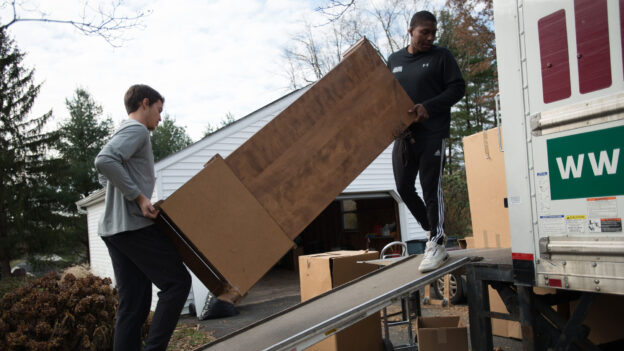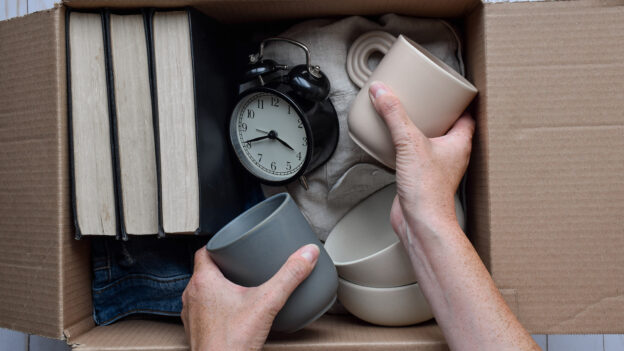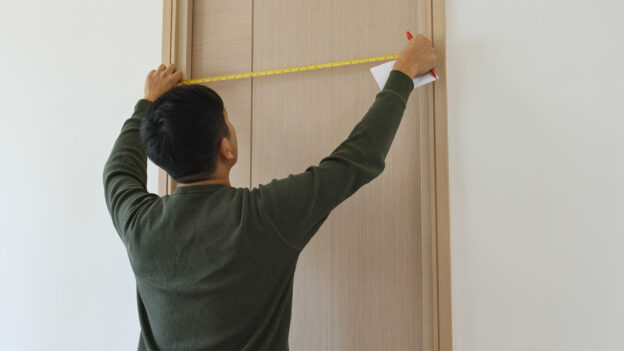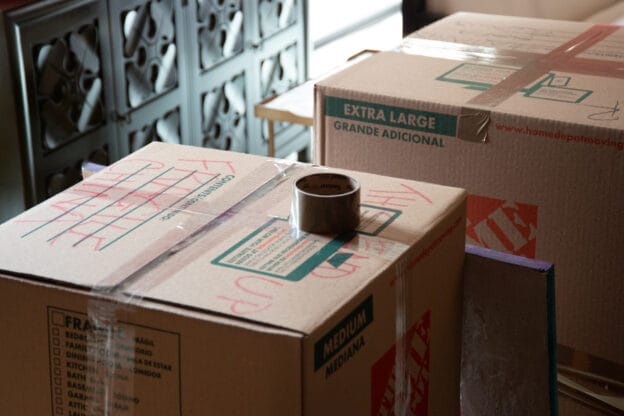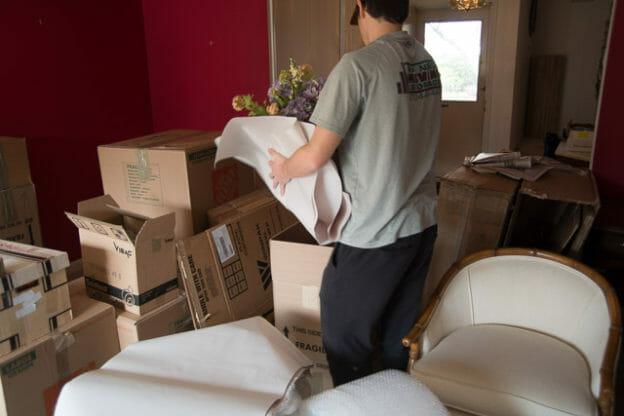Are you planning a DIY move and want to know how to load a moving truck that you’re renting? Or are you curious about how professionals load a moving truck? There is more than one way to load a moving truck, but here are some basic guidelines to keep in mind.
Before You Load a Moving Truck
1. Determine if renting a truck is the best option for you.
Before you rent a truck, make sure you can load it without damaging any of your belongings. Most people who rent moving trucks and move on their own do so to save money. There is no sense in doing this, however, if items get chipped, scratched, or broken in the process.
It may be cheaper to hire an insured moving company to move your stuff without incidents than to replace or fix items damaged by loading them yourself. It takes years of experience to properly load a truck so that furniture and other belongings stay safe.
2. Assess everything to find the safest fit.
There are many factors to consider, such as your furniture’s quality of build, age, condition, size, weight, and stability. And the same goes for boxes and your other belongings. Knowing the condition of each piece that will be on the moving truck will help you load in the most strategic way.
3. Prepare your supplies, such as pads and straps.
The extent of your supplies will determine how you load the moving truck. If you hire a moving company, then they’ll provide plenty of thick pads, straps, and rubber bands to protect your belongings. But if you’re renting a truck, then you’ll probably have limited supplies and thin pads.
If pads are limited, you will have to be more mindful of what material is touching what material—and whether that combination will cause damage. For example, wood is fine to touch cardboard in most cases, but moving companies will use a pad just to be on the safe side. If you don’t have many pads, however, you may want to save that pad for something that absolutely needs it.
The same goes for straps. If something is loose or if you’re concerned it may shift around during transport, secure it by tying a strap across or around it. If you are limited on straps, you might have to take more time to arrange your moving truck and find the perfect piece to the puzzle. You’ll want to make sure everything is packed tightly in the truck so there is no room for any loose items to shift.
4. Understand the transportation conditions.
First, remember that it can get brutally hot or below freezing in the back of the truck, depending on the season, the weather, and your location. So, only load items that won’t be affected by extreme temperatures.
Second, remember the physics that will happen in the back of the truck when you are driving. Turns, as well as starts and stops, can cause the load to shift and items to fall if they aren’t secure.
Another cause of damage can be bumps. People forget that an item not only has to withstand the weight of everything on top of it, but the combined force of it all, practically jumping on it. It helps to put lighter items up top and the heavier, sturdier items on the bottom. This is why it is important to pack with sturdy boxes and fill them to the top to prevent them from caving in.
When You Load a Moving Truck
1. First, build your tiers.
When you load a moving truck, it’s helpful to load in three levels or tiers—base, middle, and top. The base is the heaviest and sturdiest; the top is the lightest. Make sure your tiers are secure and will not shift during transport. If a tier isn’t as tight as you would like, maybe add a strap across it to keep it from falling into the next tier.
Base tier
Start with your base tier, which consists of items that are solid enough to support a fair bit of weight. These could include things like dressers, buffets, or wardrobe boxes for hanging clothes.
However, remember that every piece is different. Certain buffets or sideboards might be sturdy enough for the base tier, but others might have long legs and be too rickety. So, your discretion is essential. We recommend that you err on the side of caution.
Middle tier
Once you have your base, you can build your middle tier. This consists of anything that can bear some weight, but not enough weight to be considered base. This can include anything from boxes to nightstands.
Square items or things that can become square are best, so you can continue to stack. It is like a big game of Tetris. You can even pad your chairs, lay them horizontally, and nest them seat-to-seat to make a level tier for the top load.
Top tier
The top load consists of light items that can’t bear weight. This could include super light boxes, cushions, trash bags, etc. Basically, objects that you cannot stack on top of and are light enough to not damage anything beneath them.
The process of building tiers continues until you run out of items to make a full tier. You should be left with flat things (e.g., pictures, mirrors, TVs), beds, and “oversized” items (e.g., kitchen table, sofa, and other heavy items you cannot stack on).
2. Second, load your beds.
After you build your tiers, load your mattresses, from largest to smallest. This helps lock in the last tier and secure the load. If you have a headboard and footboard, drape a pad over them and put them between the mattress and box spring.
3. Third, load the oversized items.
After you load the beds, load your oversized items, such as couches. If there is space next to the beds, a couch might fit standing up on end. If that’s the case, you can tie it to the wall. Be sure to put the feet to the wall to best protect it.
Use your best judgment to determine which oversized items could nest in or stack on each other. Before you run out of wall space, it is a good idea to secure all flat items to the wall. Most of these items should be individually padded for best protection.
4. Fourth, load the remaining items.
Finally, with the last little bit of space in the moving truck, you can finish off with any pieces that are still left. We usually reserve this for outdoor items. This way, the truck and the rest of the belongings can stay as clean as possible if the outdoor stuff is dirty or damp. You can also use the end of the truck for plants, open-top boxes, and rugs (so they are the first things off).
A Top Notch Way to Load a Moving Truck
We could have written a whole book on the little nuances, tips, and tricks of loading, especially since there are so many variables to consider. But we hope this brief synopsis provides some guidance and insight into how to load a moving truck.
At Top Notch Moving, we have years of experience loading moving trucks, and we know that every house and every move is different, each with its own unique load. If you’re looking for some professional help with loading a moving truck, please contact us.
